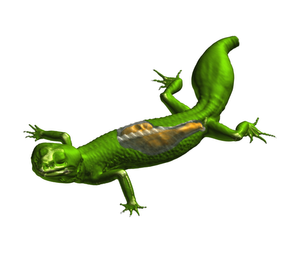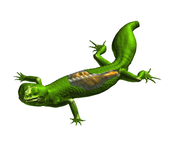Information
- Publication Type: Journal Paper (without talk)
- Workgroup(s)/Project(s):
- Date: 2005
- Journal: IEEE Transactions on Visualization and Computer Graphics
- Number: 4
- Volume: 11
- Pages: 408 – 418
- Keywords: non-photorealistic techniques, view-dependent visualization, volume rendering, focus+context techniques, level-of-detail techniques
Abstract
This paper presents importance-driven feature enhancement as a technique for the automatic generation of cut-away and ghosted views out of volumetric data. The presented focus+context approach removes or suppresses less important parts of a scene to reveal more important underlying information. however, less important parts are fully visible in those regions, where important visual information is not lost, i.e., more relevant features are not occluded. Features within the volumetric data are first classified according to a new dimension denoted as object importance. This property determines which structures should be readily discernible and which structures are less important. Next, for each feature various representations (levels of sparseness) from a dense to a sparse depiction are defined. Levels of sparseness define a spectrum of optical properties or rendering styles. The resulting image is generated by ray-casting and combining the intersected features proportional to their importance (importance compositing). The paper includes an extended discussion on several possible schemes for levels of sparseness specification. Furthermore different approaches to importance compositing are treated.Additional Files and Images
Weblinks
No further information available.BibTeX
@article{viola-2005-imp,
title = "Importance-Driven Feature Enhancement in Volume
Visualization",
author = "Ivan Viola and Armin Kanitsar and Eduard Gr\"{o}ller",
year = "2005",
abstract = "This paper presents importance-driven feature enhancement as
a technique for the automatic generation of cut-away and
ghosted views out of volumetric data. The presented
focus+context approach removes or suppresses less important
parts of a scene to reveal more important underlying
information. however, less important parts are fully visible
in those regions, where important visual information is not
lost, i.e., more relevant features are not occluded.
Features within the volumetric data are first classified
according to a new dimension denoted as object importance.
This property determines which structures should be readily
discernible and which structures are less important. Next,
for each feature various representations (levels of
sparseness) from a dense to a sparse depiction are defined.
Levels of sparseness define a spectrum of optical properties
or rendering styles. The resulting image is generated by
ray-casting and combining the intersected features
proportional to their importance (importance compositing).
The paper includes an extended discussion on several
possible schemes for levels of sparseness specification.
Furthermore different approaches to importance compositing
are treated.",
journal = "IEEE Transactions on Visualization and Computer Graphics",
number = "4",
volume = "11",
pages = "408--418",
keywords = "non-photorealistic techniques, view-dependent visualization,
volume rendering, focus+context techniques, level-of-detail
techniques",
URL = "https://www.cg.tuwien.ac.at/research/publications/2005/viola-2005-imp/",
}


 paper
paper
